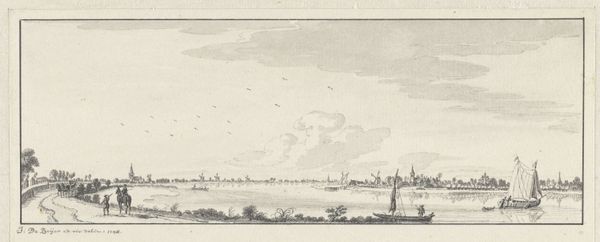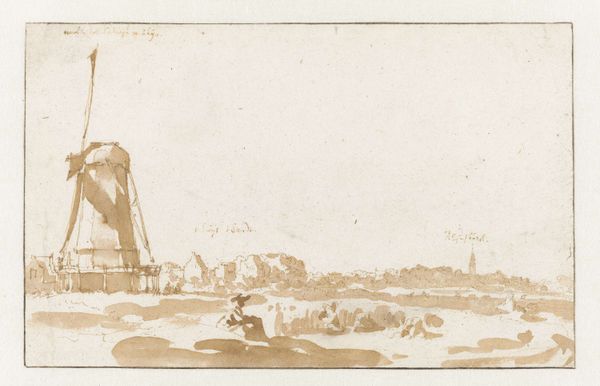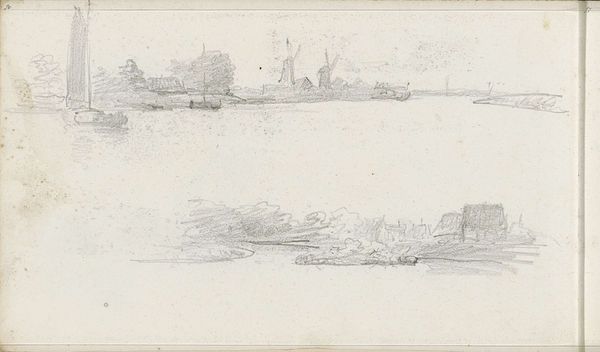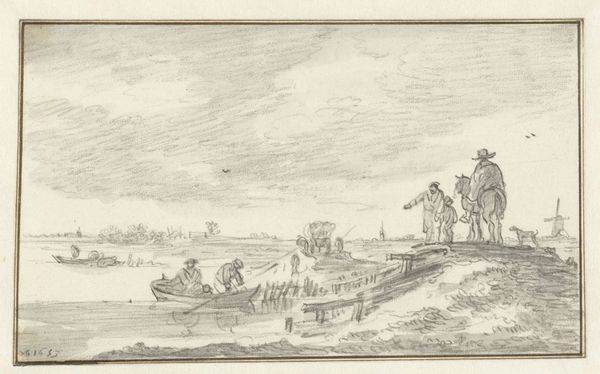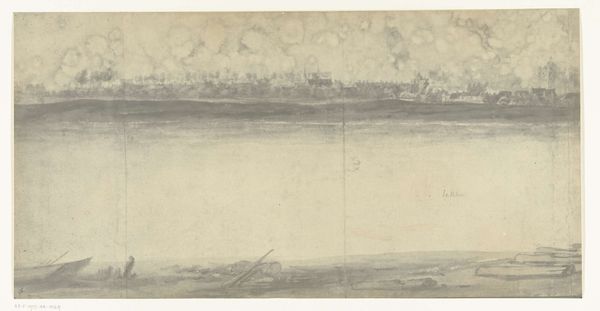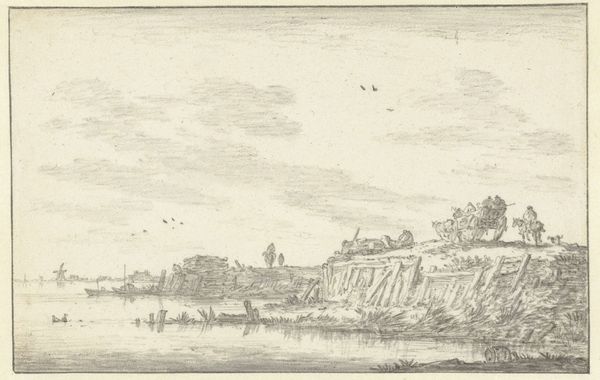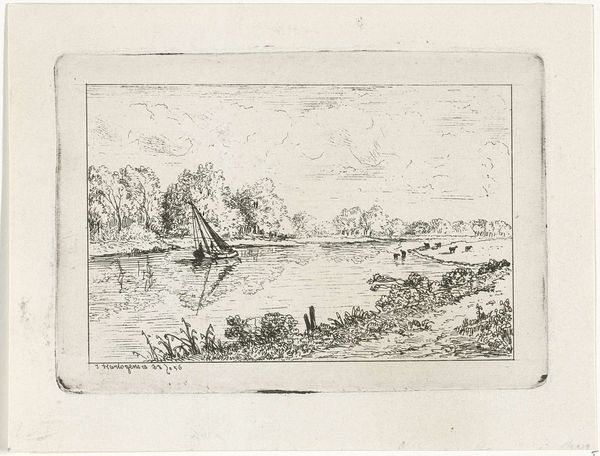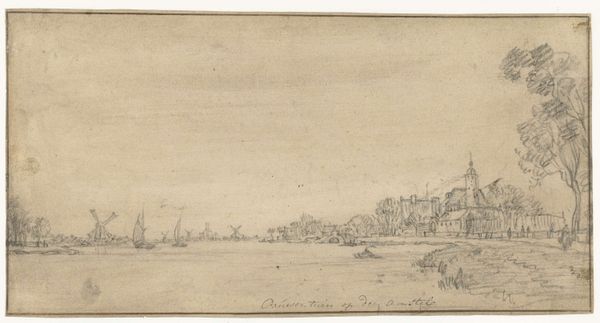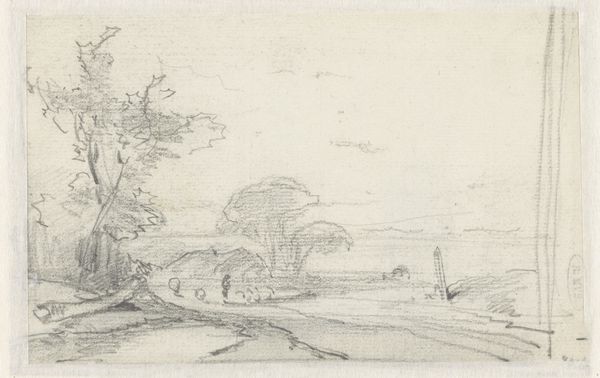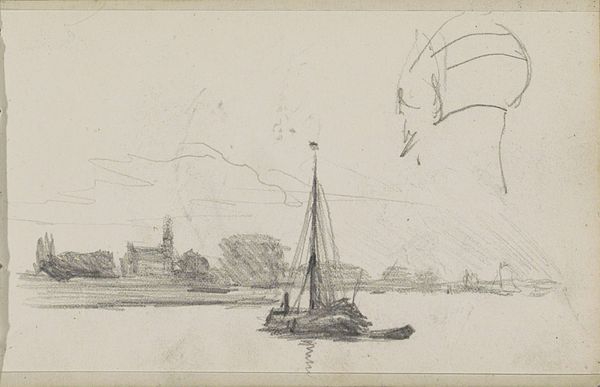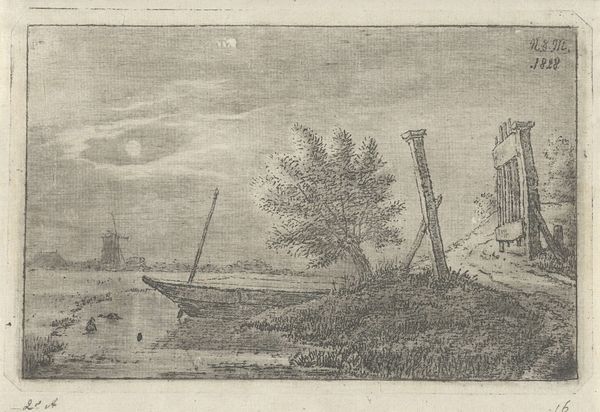
Dimensions: height 31.5 cm, width 50.2 cm
Copyright: Rijks Museum: Open Domain
Editor: Here we have A. de Nelly’s "Sourabaya," a pen and ink drawing made sometime between 1750 and 1800. It's a pretty detailed landscape. What particularly strikes me is the juxtaposition of seemingly calm daily life against the large title banner hanging over the scene. What’s your take on this piece? Curator: It’s fascinating how this drawing blends landscape with colonial power dynamics. The "Sourabaya" banner immediately frames our understanding. It wasn't just a place but a Dutch East India Company outpost, a key trading hub. What story does the image subtly communicate about Dutch Imperialism through these 'ordinary' scenes of commerce and social class? Editor: So the seeming tranquility might actually be masking the presence of colonialism? I hadn't considered that. I just assumed it was depicting a busy port. Curator: Exactly! Look closer, though. See how certain figures are positioned, their implied roles? Consider how the composition itself might be serving a purpose, idealizing Dutch power in Southeast Asia through an ordered and profitable landscape. Who is afforded leisurely time, and who is laboring? How does this relate to social hierarchies inherent within imperial systems? Editor: Now that you point that out, I do see how those elements contribute to a visual narrative about power and the organization of labor in a colony. Thanks! I'm walking away from this conversation understanding the potential political role of landscape art. Curator: And I appreciate your fresh eyes. It reminds us that every image, even seemingly innocent ones, exists within specific historical and political contexts, capable of reflecting and reinforcing certain viewpoints.
Comments
No comments
Be the first to comment and join the conversation on the ultimate creative platform.

